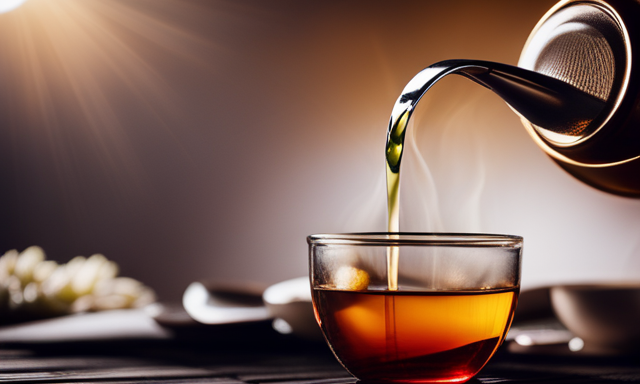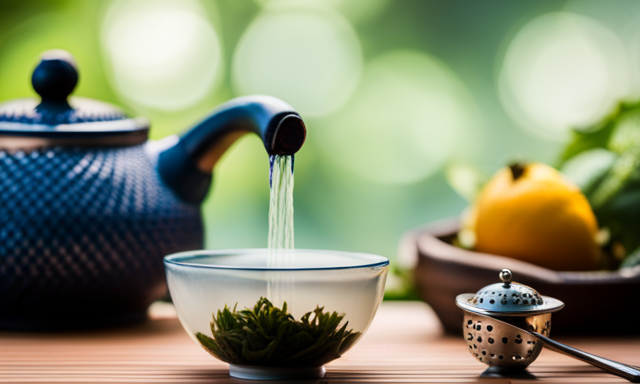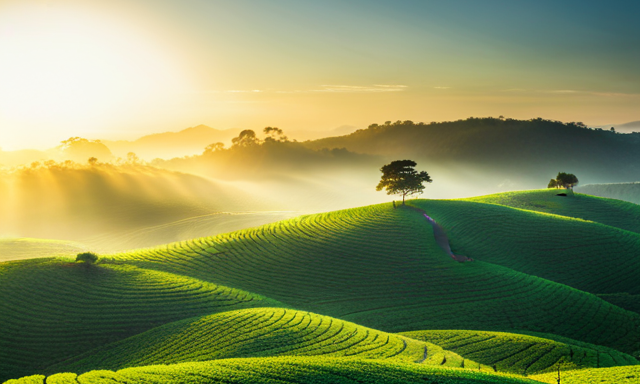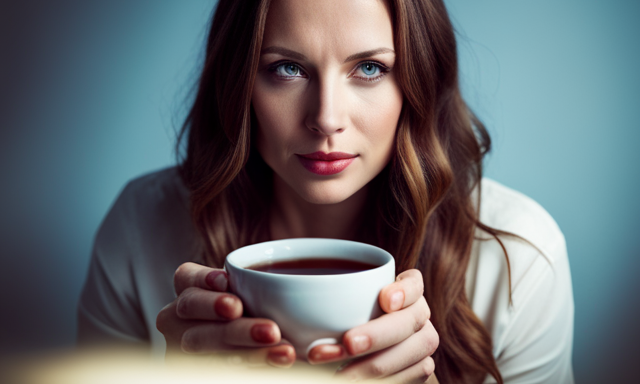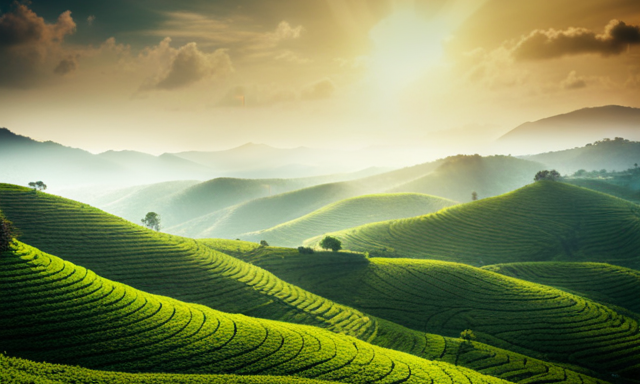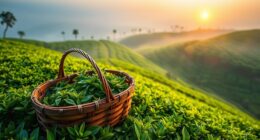How to Drink Oolong Tea:
-
Choosing the Right Variety:
- Oolong tea comes in various varieties, each with its own unique characteristics. When selecting oolong tea, consider factors such as oxidation level, flavor profile, and origin.
- Some popular oolong tea varieties include Tie Guan Yin, Da Hong Pao, and Dong Ding. Experiment with different varieties to find your preferred taste.
-
Brewing Techniques:
- Start by heating water to the appropriate temperature. Oolong tea is best brewed with water that is around 190-200°F (87-93°C).
- Use a teapot or gaiwan to steep the tea leaves. Add the desired amount of tea leaves and pour hot water over them.
- Let the tea steep for about 2-3 minutes, adjusting the brewing time based on your preference for stronger or milder flavors.
- Oolong tea leaves can be steeped multiple times, so don’t discard them after the first infusion. Each steep will offer a slightly different flavor profile.
-
Understanding Taste Profiles:
- Oolong tea offers a wide range of taste profiles, from light and floral to rich and roasted. Take note of the flavor notes and aromas present in the tea you choose.
- Lighter oolong teas often have floral and fruity notes, while darker oolongs may have more roasted or nutty flavors.
- Pay attention to the mouthfeel of the tea, noting whether it is smooth, creamy, or has a slight astringency.
-
Appreciating the Cultural Significance:
- Oolong tea has a rich history and cultural significance in Chinese tea ceremonies. Take the time to learn about the traditions and rituals associated with oolong tea.
- Consider incorporating mindfulness and intention into your tea-drinking experience. Take a moment to savor the aroma and flavors, allowing yourself to fully immerse in the experience.
So, with the right variety, proper brewing techniques, an understanding of taste profiles, and an appreciation for its cultural significance, you can fully enjoy the pleasures of oolong tea. Take the time to explore different varieties and experiment with brewing methods to find your perfect cup of oolong tea. Cheers!
Key Takeaways
- Oolong tea can be enjoyed through traditional Chinese Gongfu tea ceremonies or Taiwanese tea tasting customs, each offering a unique experience.
- Experimenting with different oolong tea blends, infusions, steeping times, and temperatures can help discover a wide range of flavors and aromas.
- Oolong tea is not only enjoyed for its taste but also for its health benefits, including boosting metabolism, improving digestion, and promoting heart health.
- Understanding the different types of oolong tea and their brewing techniques can enhance the tea-drinking experience and allow for personalization based on flavor preferences.
The Origins and Varieties of Oolong Tea
If you’re a tea lover, you’ll be amazed by the rich history and diverse range of flavors that oolong tea has to offer. Oolong tea is a traditional Chinese tea that falls between green and black teas in terms of oxidation.
The oolong tea production process involves withering the leaves under the sun, allowing them to partially oxidize, and then heating them to stop the oxidation process. This intricate process gives oolong tea its unique flavor profile that is often described as floral, fruity, and sometimes even nutty.
Differentiating oolong tea from other types of tea can be done by examining the appearance of the leaves, which are typically rolled into tight, twisted shapes.
Now that we understand the origins and varieties of oolong tea, let’s explore how to choose and store this delightful beverage.
How to Choose and Store Oolong Tea
When you’re selecting your oolong tea, make sure to consider the aroma and appearance to find the perfect brew for your taste buds. The aroma can range from floral and fruity to toasty and earthy, so choose one that appeals to your senses. In terms of appearance, look for tightly rolled leaves that are dark green or brown in color. These are signs of high-quality oolong tea.
To help you choose and store your oolong tea, here is a handy table:
| Choosing Tea | Storing Tea |
|---|---|
| Consider aroma | Store in airtight |
| Look for | container away |
| tightly rolled | from light and |
| leaves | moisture |
By following these guidelines, you can ensure that your oolong tea stays fresh and flavorful. Once you have selected and stored your tea, you are ready to move on to the next step – brewing oolong tea: a step-by-step guide.
Brewing Oolong Tea: Step-by-Step Guide
Get ready to embark on a sensory journey as you immerse yourself in the art of brewing oolong tea, a dance of swirling steam and delicate flavors that will transport you to a tranquil oasis.
To begin, it’s crucial to understand the importance of brewing temperature and steeping time. Oolong tea is unique in that it requires a slightly higher water temperature than green tea, but lower than black tea. Aim for a brewing temperature of around 180-200°F (82-93°C) to bring out the tea’s optimal flavors.
As for steeping time, it varies depending on the type of oolong tea you have. Lighter oolongs typically require 3-5 minutes, while darker ones may need 5-7 minutes. Remember to experiment and adjust according to your personal taste preference.
Now that we’ve covered the brewing process, let’s dive into understanding the taste profiles of oolong tea.
Understanding the Taste Profiles of Oolong Tea
Let’s explore the fascinating spectrum of flavors that oolong tea has to offer.
Oolong tea is known for its complex and nuanced taste profiles, which can vary widely depending on factors such as the type of tea leaves used, the region where it is grown, and the brewing technique.
The aroma of oolong tea can range from floral and fruity to woody and roasted.
As for the flavor profiles, oolong tea can be light and delicate with notes of honey and orchids, or it can be rich and full-bodied with hints of caramel and toasted nuts.
Exploring different brewing techniques for oolong tea can further enhance its flavors, allowing you to experience its various taste dimensions.
As we delve into the next section on pairing oolong tea with food, you’ll discover how its unique flavors can complement and enhance different culinary experiences.
Pairing Oolong Tea with Food
Discover the delightful harmony that can be achieved when pairing oolong tea with a variety of delectable foods. Here are three flavor combinations to enhance your oolong tea experience:
-
Citrus fruits: The bright and tangy flavors of citrus fruits like oranges and lemons complement the floral and fruity notes of oolong tea. Squeeze a slice of lemon into your tea or enjoy it alongside a zesty orange for a refreshing combination.
-
Nutty desserts: Oolong tea’s nutty undertones are enhanced when paired with desserts like almond cookies or pistachio cake. The earthy flavors of the tea beautifully balance the richness of these treats, creating a delightful combination of flavors.
-
Savory dishes: Oolong tea’s complex taste profile also pairs well with savory dishes. Try sipping on oolong tea while enjoying a plate of roasted duck or a spicy stir-fry. The tea’s smoothness and depth enhance the flavors of these dishes, providing a unique culinary experience.
Now, let’s explore the health benefits of oolong tea.
The Health Benefits of Oolong Tea
Indulging in a cup of this exquisite brew, you will unlock a treasure trove of health benefits that will nourish your body and invigorate your senses.
Oolong tea has gained recognition for its potential to aid in weight loss. It contains polyphenols that can increase metabolism and help burn fat.
Additionally, oolong tea is known for its ability to improve skin health. The antioxidants in this tea can combat free radicals and reduce the signs of aging, leaving your skin radiant and youthful.
As we delve into the world of oolong tea rituals and traditions, you’ll discover the fascinating customs and practices that have surrounded this beloved beverage for centuries.
Oolong Tea Rituals and Traditions
When it comes to oolong tea, there are fascinating rituals and traditions that have been passed down through generations.
One of the most well-known is the Chinese Gongfu Tea Ceremony, which involves careful preparation and brewing techniques.
Additionally, Taiwanese tea tasting customs offer a unique way to appreciate the nuances and flavors of oolong tea.
Both of these practices provide a deeper understanding and connection to this beloved beverage.
Chinese Gongfu Tea Ceremony
To fully experience the art of drinking oolong tea, immerse yourself in the enchanting world of the Chinese Gongfu Tea Ceremony. This traditional ceremony is a revered practice that requires specific Chinese Gongfu tea equipment and follows meticulous gongfu tea brewing techniques.
The equipment includes a small teapot, small tea cups, a tea tray, a tea pitcher, and a tea strainer. The ceremony begins with warming the teapot and tea cups, followed by rinsing the tea leaves to awaken their flavors.
The tea is then brewed in multiple short infusions, with each infusion carefully poured into the tea pitcher and then distributed into the small tea cups. This process allows the tea to unfold its unique flavors and aromas.
The Chinese Gongfu Tea Ceremony is a beautiful expression of tea appreciation and sets the stage for the subsequent section about Taiwanese tea tasting customs, where we will explore another fascinating aspect of oolong tea culture.
Taiwanese Tea Tasting Customs
Immerse yourself in the captivating world of Taiwanese tea tasting customs, where each sip transports you to a serene mountain landscape, enveloped in the delicate fragrance of freshly bloomed flowers.
Taiwanese tea etiquette is steeped in tradition and respect for the tea. When participating in a tea tasting, it is customary to hold the tea cup with two hands, showing appreciation for the tea and the person who prepared it.
As the tea is presented, take a moment to admire its color, aroma, and clarity before taking a small sip. Allow the tea to linger on your palate, savoring its flavors and complexities.
It is important to refrain from slurping or making loud noises while tasting the tea, as this is considered impolite. By following these tea tasting etiquette practices, you can fully appreciate the craftsmanship and artistry behind Taiwanese tea.
Now, let’s dive into exploring oolong tea blends and infusions.
Exploring Oolong Tea Blends and Infusions
Try experimenting with different oolong tea blends and infusions to discover the unique flavors and aromas that can transport your taste buds to new heights. Here are four ways to explore the world of oolong tea:
-
Flavor Profiles: Oolong tea offers a wide range of flavors, from floral and fruity to toasty and nutty. Try a traditional oolong for a balanced flavor, or opt for a flavored blend like jasmine or peach for a twist.
-
Health Benefits: Oolong tea is known for its numerous health benefits. It can boost metabolism, aid in weight loss, promote heart health, and improve digestion. Discover the incredible benefits of oolong tea while enjoying a delicious cup.
-
Tea Blends: Mix oolong tea with other ingredients like green tea, black tea, or herbs to create unique blends. This allows you to customize your tea to your liking and explore new taste combinations.
-
Infusions: Experiment with different steeping times and temperatures to bring out the best flavors in your oolong tea. Whether you prefer a light and delicate brew or a strong and robust infusion, the choice is yours.
By exploring the diverse world of oolong tea blends and infusions, you can enhance your tea-drinking experience and discover flavors that will delight your palate.
Now, let’s delve into the fascinating world of oolong tea in popular culture and history.
Oolong Tea in Popular Culture and History
Step into the captivating realm of popular culture and history, where oolong tea dances gracefully through the ages, leaving behind a trail of intrigue and enchantment.
Oolong tea has made its mark not only in our cups but also in movies and literature. From the iconic tea ceremonies in Chinese films to the delicate tea settings in Japanese literature, oolong tea has become a symbol of elegance and sophistication. Its presence in popular culture showcases the tea’s rich history and cultural significance.
In movies, oolong tea is often used to depict calmness and serenity, while in literature, it serves as a metaphor for introspection and contemplation.
As we delve further into the world of oolong tea, let’s explore some tips and tricks for tea enthusiasts to enhance their tea-drinking experience.
Oolong Tea Tips and Tricks for Tea Enthusiasts
When it comes to oolong tea, I love to experiment with different steeping methods to bring out the best flavors. Whether it’s adjusting the water temperature or steeping time, I enjoy finding the perfect balance to enhance the tea’s unique characteristics.
Creating my own oolong tea blends is a delightful way to personalize my tea experience. By combining different oolong varieties or adding complementary ingredients like fruits or herbs, I can create a blend that suits my taste preferences perfectly.
Experimenting with Steeping Methods
To truly savor the rich flavor of oolong tea, let your creativity flow and explore different ways to steep it, allowing your taste buds to dance with delight. One way to experiment is by adjusting the steeping temperature.
Oolong tea can be steeped at different temperatures, ranging from 180°F to 210°F, to bring out different flavors and aromas. For a lighter and more delicate brew, try steeping at a lower temperature, around 180°F. If you prefer a stronger and more robust flavor, go for a higher temperature, such as 210°F.
Another element to play around with is the tea to water ratio. Increasing or decreasing the amount of tea leaves can result in a stronger or milder brew. So go ahead and explore these variations in steeping methods to find your perfect cup of oolong tea.
Now, let’s dive into the exciting world of creating your own oolong tea blends.
Creating Your Own Oolong Tea Blends
Get ready to unleash your inner tea artist as you dive into the fascinating world of crafting your very own blends of the beloved oolong. Creating your own oolong tea blends allows you to customize the flavor combinations and reap the benefits of blending oolong tea.
When it comes to blending oolong tea, the possibilities are endless. You can mix different types of oolong tea together to create a unique flavor profile. For example, you could blend a floral oolong with a fruity oolong to create a refreshing and aromatic blend. Or, you could blend a roasted oolong with a creamy oolong for a rich and comforting cup of tea.
Blending oolong tea not only allows you to create your own signature flavor, but it also allows you to enjoy the benefits of different oolong teas. For instance, blending a high-quality oolong with a medicinal oolong can provide both a delicious taste and potential health benefits.
So, grab your favorite oolong teas and start experimenting with blending to create your perfect cup of tea.
Frequently Asked Questions
What is the recommended water temperature for brewing oolong tea?
The recommended water temperature for brewing oolong tea is around 185°F (85°C). This temperature helps to extract the beneficial compounds in oolong tea, such as catechins and caffeine, which can aid in weight loss.
Can oolong tea be steeped multiple times?
Yes, oolong tea can be steeped multiple times, allowing you to reuse the leaves and get the most out of them. This not only saves money but also enhances the flavor and provides health benefits.
How long should oolong tea leaves be steeped for optimal flavor?
For optimal flavor, steep oolong tea leaves for 3-5 minutes. This allows the leaves to release their complex flavors while avoiding bitterness. The result is a rich and aromatic tea with a balanced flavor profile.
Does oolong tea contain caffeine?
Yes, oolong tea does contain caffeine. However, the caffeine content may vary depending on the specific type and brewing method. Oolong tea also offers numerous health benefits, such as aiding in digestion and boosting metabolism.
Are there any specific health considerations or precautions when consuming oolong tea?
When consuming oolong tea, it’s important to be aware of any specific dietary restrictions you may have. Additionally, there are potential side effects such as digestive issues and caffeine sensitivity that should be taken into consideration.
Conclusion
In conclusion, oolong tea is a tantalizing tipple that tantalizes the taste buds and tickles the senses. With its diverse varieties and origins, oolong tea offers a world of flavors to explore.
By choosing and storing it carefully, brewing it with precision, and understanding its taste profiles, one can truly appreciate the depth and complexity of this exquisite beverage.
Whether enjoyed on its own or paired with food, oolong tea is sure to elevate any moment into a delightful experience. So why wait? Dive into the world of oolong tea and let your taste buds dance with delight!

